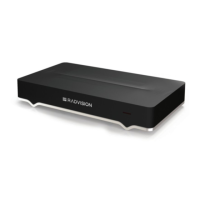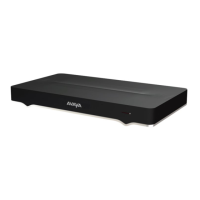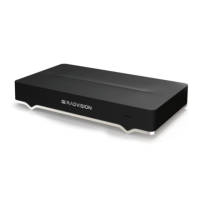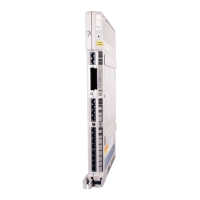Configuring Advanced System Name Settings
About this task
You can set the basic system name in the Quick Setup Wizard (see Setting the System Name,
Language, and Call Method on page 111). This procedure describes how to use an alternate
system name, such as the SIP username.
The name is displayed on the system's title bar (Figure 72: XT Series's titlebar on page 152), and
is shown to participants seeing your image in a videoconference (for example: John-Smith, or
9th-Floor-Room, or NY-Office). This name is also displayed in the roster of an Avaya Spaces
meeting.
Figure 72: XT Series's titlebar
Depending on your integration, you can configure your XT Series to show one of several names:
• Use the system name as defined in the Quick Setup Wizard.
• Use the unicode version of the system name for non-English characters.
• Use the SIP username if this XT Series is registered to a SIP registrar or proxy. This is the
same as the System Name, unless you change it manually as described in
Registering the
XT Series to a SIP Server on page 133.
• Use the H.323 name if this XT Series is registered to a gatekeeper. This is the same as the
System Name, unless you change it manually as described in
Configuring Advanced
Gatekeeper Settings on page 161.
• Use the hostname, which is the same as the system name, but some characters like a space
in the name are replaced by a hyphen.
Before you begin
If configuring from the endpoint, you must first enable advanced configuration, as described in
Enabling Advanced Maintenance on the XT Series on page 151.
Procedure
1. Access the system name settings. From the XT Series web interface, select
Administrator Settings > System > Location. From the endpoint's main menu, select
Configure > Advanced > System > Location.
Advanced Configuration of the XT Series
August 2020 Deployment Guide for Avaya XT Series 152
Comments on this document? infodev@avaya.com

